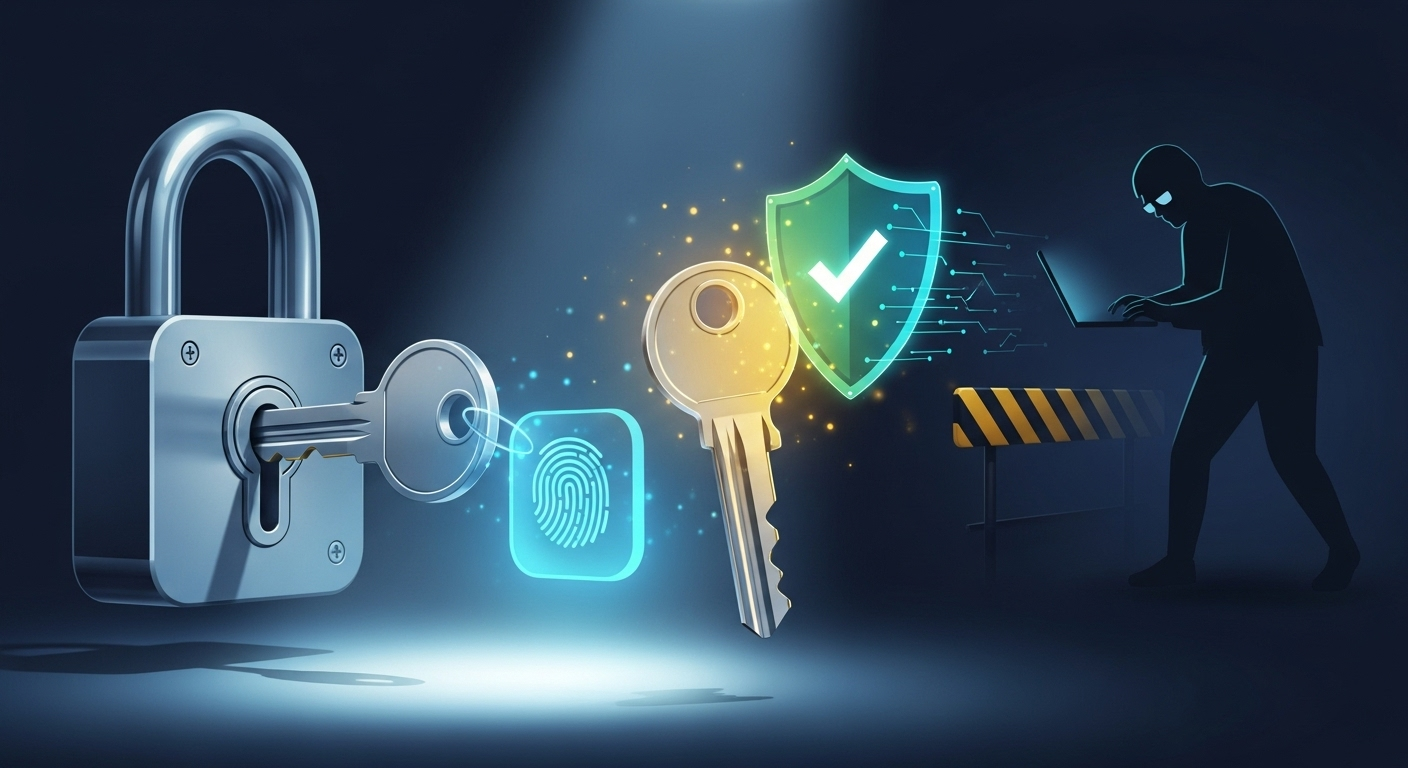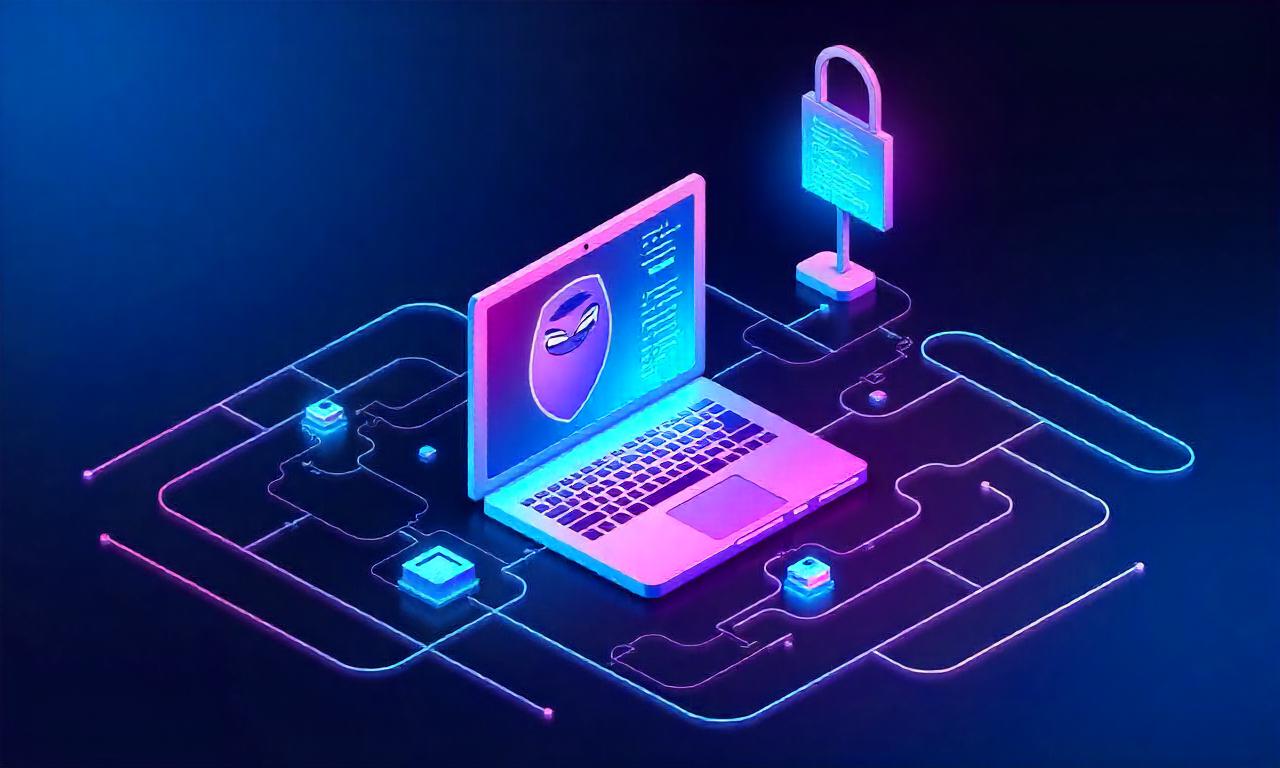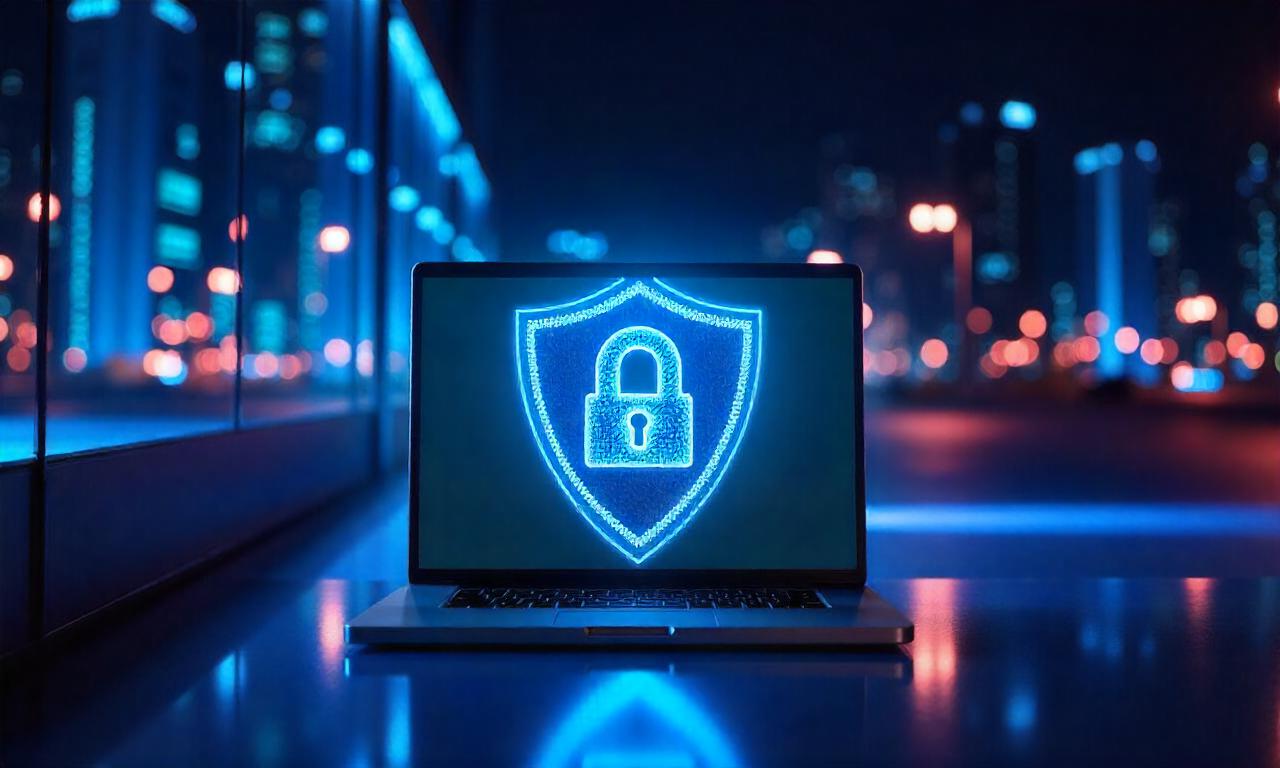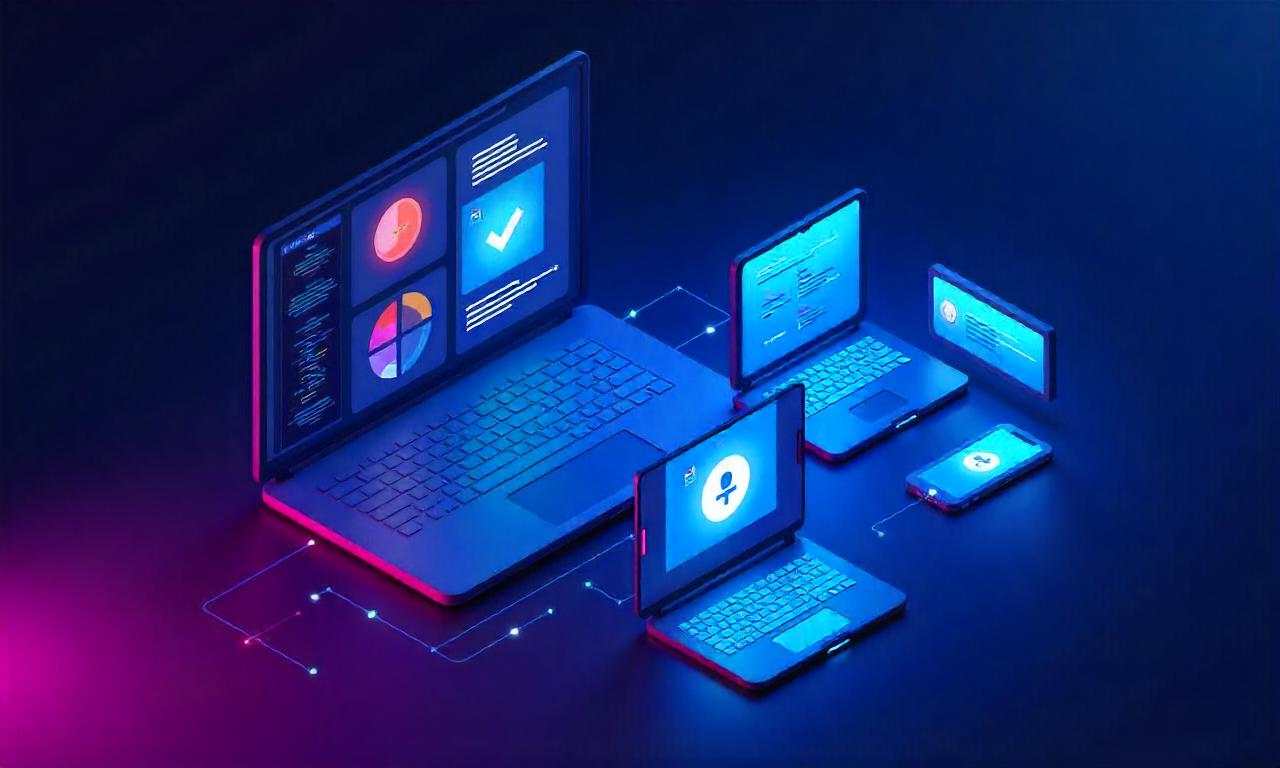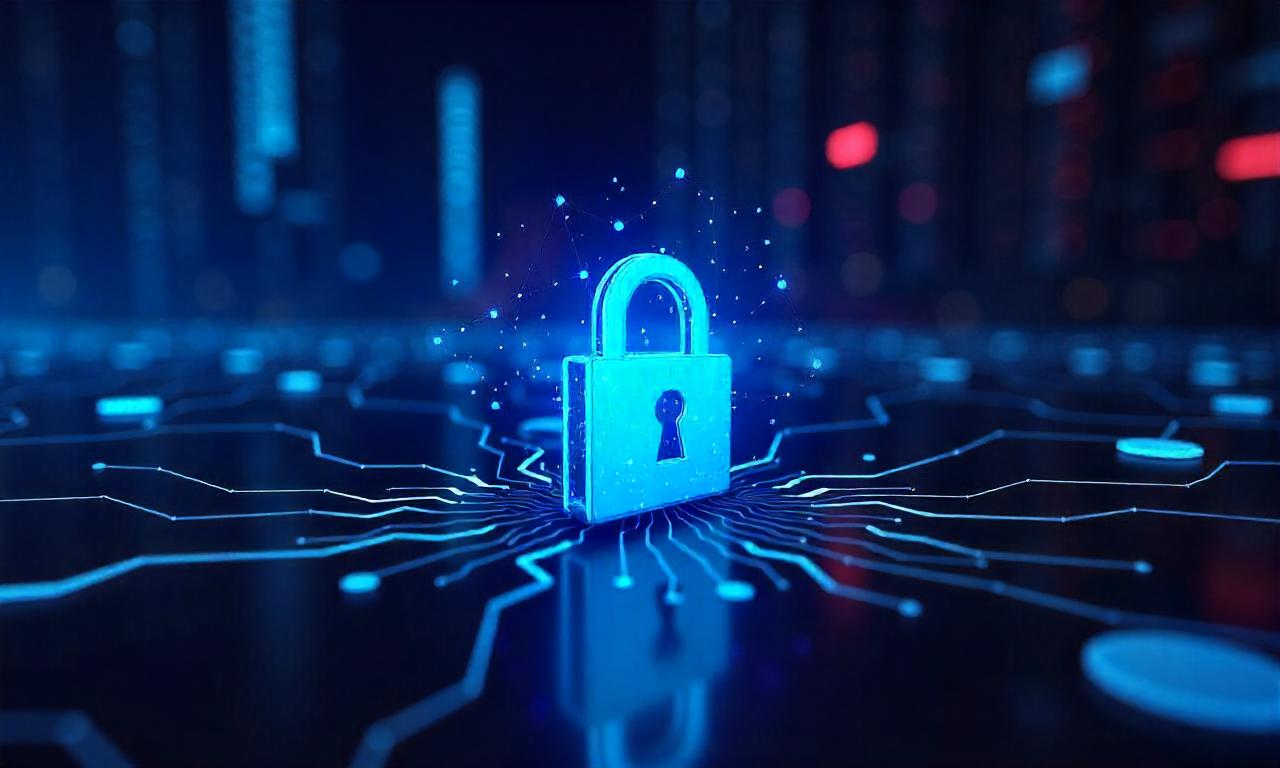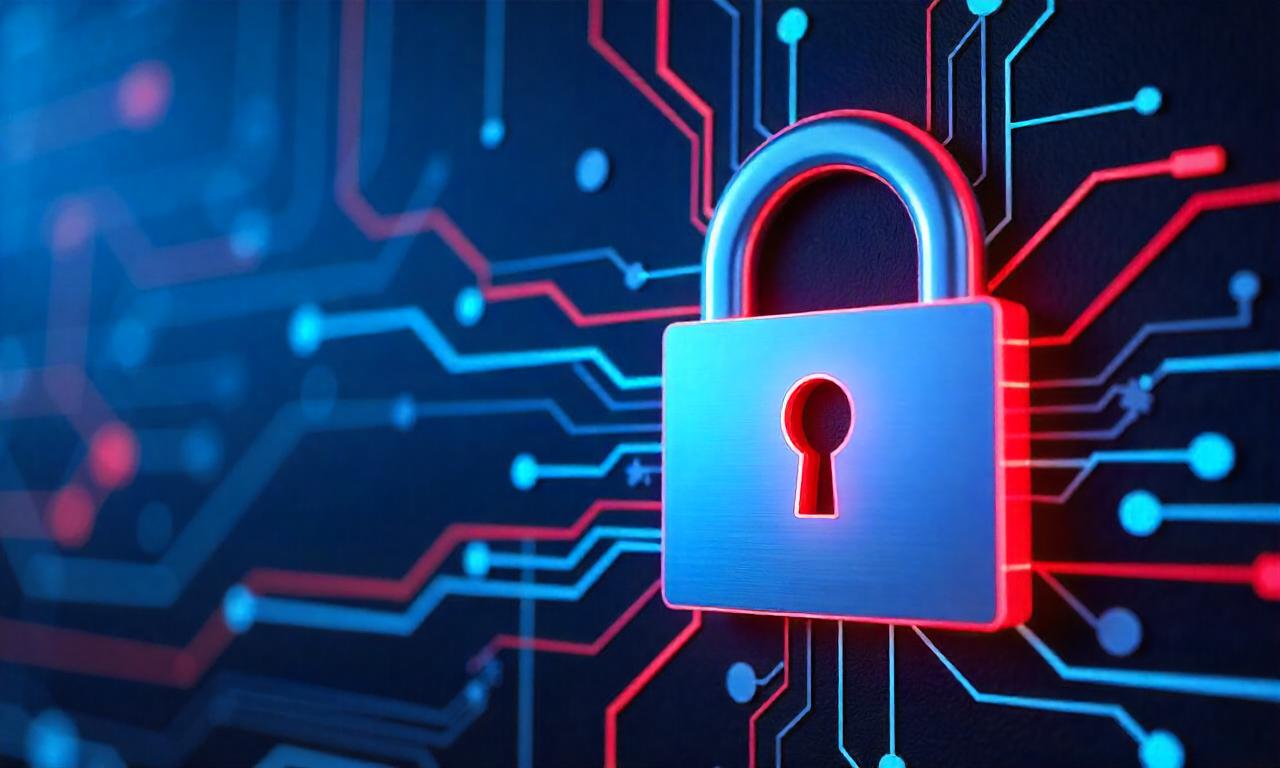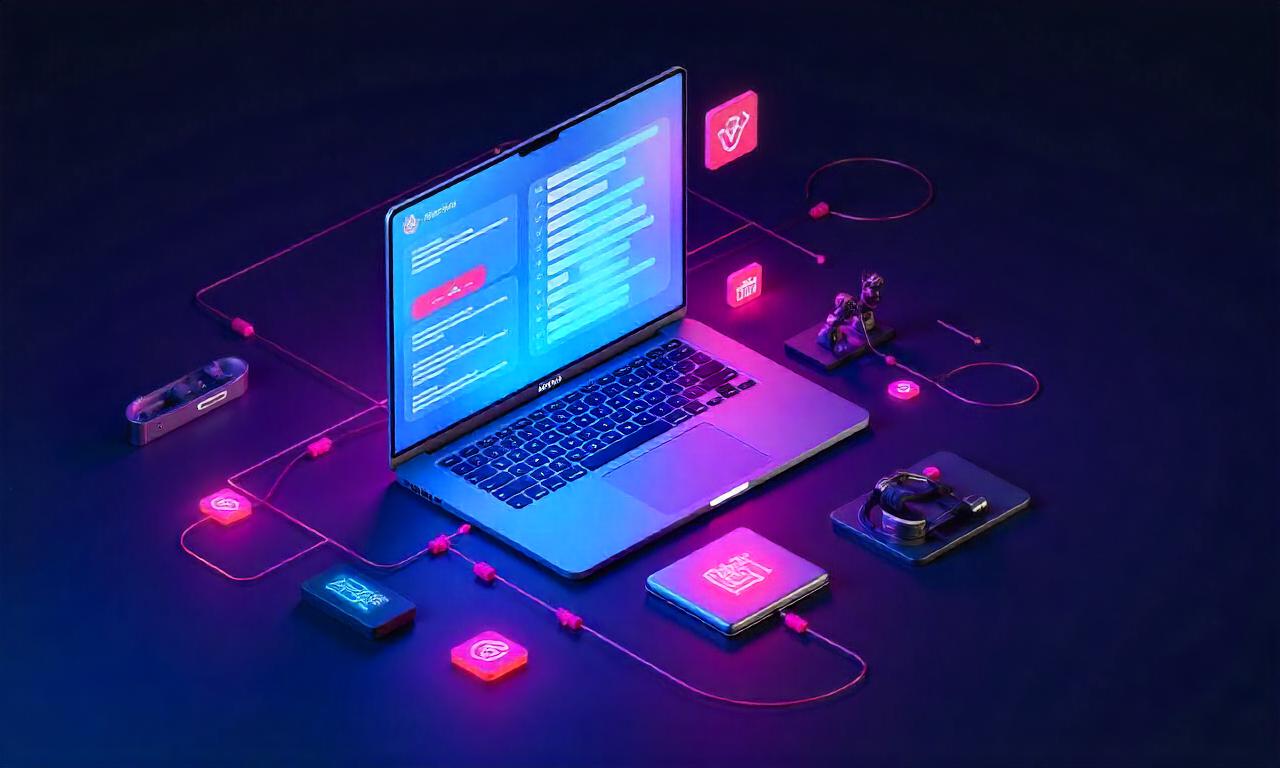In our hyper-connected world, where personal data is the new currency, a single password is no longer a sufficient guardian for our digital lives. From banking details and private conversations to precious photos and professional documents, we entrust an immense amount of sensitive information to online services. The alarming rise in data breaches and sophisticated cyberattacks has laid bare the vulnerabilities of traditional password-only security. This is precisely why understanding the importance of two-factor authentication is not just a recommendation for the tech-savvy, but an absolute necessity for everyone who values their digital privacy and security. It represents the single most effective step you can take to fortify your online accounts against unauthorized access.
Table of Contents
ToggleUnderstanding the Fundamentals: What is Two-Factor Authentication?
At its core, Two-Factor Authentication (or 2FA) is a security process that requires users to provide two different authentication factors to verify their identity. Think of it as a double-check system. Your password is the first factor—something you know. The second factor is typically something you have (like your smartphone) or something you are (like your fingerprint). This multi-layered approach means that even if a cybercriminal manages to steal your password, they still cannot access your account without also having possession of your second factor.
The concept of authentication is built on three fundamental factor types:
- Knowledge Factor: Something only the user knows, like a password, PIN, or the answer to a security question.
- Possession Factor: Something only the user has, such as a mobile phone (for receiving a code), a physical security key, or an ID card.
- Inherence Factor: Something the user is, which refers to biometric data like a fingerprint, facial scan, or voice recognition.
Two-Factor Authentication combines any two of these categories. It's a significant upgrade from Single-Factor Authentication (SFA), which relies solely on a password. While you may also hear the term Multi-Factor Authentication (MFA), 2FA is simply a specific subset of MFA. MFA can involve two or more factors, but 2FA is the most common and accessible implementation for the average user, providing a perfect balance of enhanced security and usability.
The Mechanics of Security: How Does 2FA Actually Work?
The process of using 2FA is designed to be straightforward for the legitimate user but a formidable barrier for an attacker. When you log in to an account with 2FA enabled, the process follows a simple sequence. First, you enter your username and password as you normally would. Once the service verifies that your password is correct, it initiates the second step. It prompts you to provide your second authentication factor before granting access. This is the critical moment where a stolen password becomes useless on its own.
This second factor can be delivered in several ways, depending on the method you've chosen. It could be a unique, time-sensitive code generated by an authenticator app on your phone, a code sent to you via SMS, a simple tap on a physical security key plugged into your computer, or a request for your fingerprint on your mobile device. The server on the other end is expecting this specific second piece of information. Without it, the login attempt fails, and your account remains secure. This process effectively neutralizes the threat posed by password theft, which is the root cause of the vast majority of account takeovers.
- #### The 'Something You Have' Factors: Apps and Keys
One of the most secure and popular forms of 2FA involves a “possession” factor. This is typically a device you physically own. The two leading methods in this category are authenticator apps and physical security keys. Authenticator apps, such as Google Authenticator, Microsoft Authenticator, or Authy, are free applications you install on your smartphone. When you link an online account, the app generates a Time-based One-Time Password (TOTP) that refreshes every 30-60 seconds. To log in, you simply open the app and enter the current code. Since the code is generated locally on your device and is constantly changing, it is highly resistant to interception.
Physical security keys, like the YubiKey or Google Titan Security Key, represent the gold standard for 2FA. These are small USB devices that you plug into your computer or tap against your phone (using NFC). When prompted for your second factor, you simply touch a button on the key. This method is virtually phishing-proof, as it involves a physical interaction and cryptographic verification that cannot be easily replicated or stolen by a remote attacker. While they involve a small upfront cost, their superior security makes them an excellent investment for protecting high-value accounts.
- #### The 'Something You Are' Factor: Biometrics
The “inherence” factor, or biometrics, leverages your unique biological traits for authentication. This is the technology behind unlocking your smartphone with your fingerprint (Touch ID) or your face (Face ID). Many mobile banking apps and password managers have integrated biometric authentication as a seamless and highly secure form of 2FA. When you try to access the app, after potentially entering a master password (the first factor), it will prompt for your fingerprint or facial scan (the second factor).
The primary advantage of biometrics is the unparalleled convenience. There are no codes to type or keys to insert; the verification is nearly instantaneous. From a security perspective, it's incredibly difficult for an attacker to replicate someone's fingerprint or face, making it a robust second factor. As this technology becomes more integrated into our daily devices, it is lowering the barrier to entry for strong authentication, making it easier than ever for users to adopt 2FA without feeling like it's a cumbersome extra step.
The Crucial Benefits: Why You Absolutely Need 2FA Today
The single most compelling reason to enable 2FA is its proven effectiveness in preventing unauthorized access. According to research from Microsoft, enabling multi-factor authentication blocks over 99.9% of automated cyberattacks. This statistic alone highlights the dramatic leap in security you gain. In an age of massive data breaches where billions of credentials are leaked onto the dark web, it's safe to assume that at least one of your passwords has been compromised. 2FA is the safety net that renders that compromised password harmless.
Beyond just protecting against password theft, 2FA provides a robust defense against a variety of common attack vectors. This includes phishing attacks, where criminals trick you into entering your credentials on a fake website. Even if you fall for the trick and give them your password, they will be stopped cold when prompted for the 2FA code they don't have. It also thwarts brute-force attacks, where attackers use software to guess thousands of password combinations per second. The requirement of a second factor makes this automated guessing game impossible to win.
For businesses and professionals, implementing 2FA is no longer optional; it's a critical component of modern cybersecurity hygiene. It helps protect sensitive company data, intellectual property, and customer information. A single compromised employee account can lead to a catastrophic company-wide breach, resulting in immense financial loss, reputational damage, and potential legal and regulatory penalties. Enforcing 2FA across an organization demonstrates a commitment to security, building trust with clients and partners, and is often a prerequisite for obtaining cybersecurity insurance or complying with industry standards like PCI DSS and HIPAA.
- #### Mitigating the Risk of Weak and Reused Passwords
Let’s be honest: password management is a chore. The need to create and remember dozens of unique, complex passwords for every online service leads to “password fatigue.” As a result, a vast number of people fall back on the dangerously insecure habit of reusing the same password across multiple websites. This is a hacker’s dream. If they breach one minor website where you used your “standard” password, they will immediately try that same password and email combination on more valuable targets like your email and banking accounts—an attack known as credential stuffing.
This is where 2FA shines as a crucial failsafe. It acknowledges the reality of human behavior and provides a powerful layer of protection that compensates for imperfect password habits. Even if your reused password is stolen from a data breach at a less secure site (like an old forum you signed up for years ago), your critical accounts remain safe because the attacker is missing the essential second factor. Essentially, 2FA acts as your personal security guard, protecting your most important digital assets even when your first line of defense—the password—has been broken.
- #### Defending Against Sophisticated Phishing Scams
Phishing remains one of the most effective and widespread methods used by cybercriminals. An attacker might send you an urgent email that appears to be from your bank, a popular social media platform, or even your IT department. The email will contain a link that directs you to a pixel-perfect replica of the real login page. Unsuspectingly, you enter your username and password, handing your credentials directly to the attacker.
Without 2FA, the game is over at this point; the attacker has everything they need. With 2FA enabled, however, the story changes. After the attacker captures your password, their malicious system (or the attacker themselves) will be prompted by the real service to provide the 2FA code. Since they do not have your authenticator app, your physical key, or your phone to receive an SMS, their attack hits a wall. This simple yet powerful mechanism is what makes 2FA such an effective anti-phishing tool, transforming a potentially devastating security breach into a failed attempt.
A Practical Guide to Implementing Two-Factor Authentication
Getting started with 2FA is much easier than you might think. The best approach is to begin with your most valuable accounts. Your primary email account should be your number one priority, as it often serves as the gateway to resetting passwords for all your other accounts. Following that, focus on financial services (banking, PayPal), password managers, cloud storage (Google Drive, Dropbox), and major social media accounts. These accounts contain your most sensitive data and are the most attractive targets for attackers.
The general process for enabling 2FA is quite similar across most platforms. You will typically need to:
- Log in to your account and navigate to the Security or Account Settings section.
- Look for an option labeled "Two-Factor Authentication," "2-Step Verification," or "Login Verification."
- Choose your preferred 2FA method (Authenticator App is highly recommended).
- Follow the on-screen instructions, which usually involve scanning a QR code with your authenticator app.
- Crucially, save your backup codes! These are single-use codes that will allow you to access your account if you lose your second factor (e.g., your phone is lost or broken). Store them in a safe, offline location.
- #### Choosing the Right 2FA Method for You
Not all 2FA methods offer the same level of security. While any 2FA is better than no 2FA, it’s important to understand the differences to make an informed choice. The most common options are SMS-based codes, authenticator apps, and physical security keys. SMS is convenient but is considered the least secure option due to its vulnerability to “SIM swapping” attacks, where a criminal tricks a mobile carrier into transferring your phone number to a SIM card they control, allowing them to intercept your 2FA codes.
Authenticator apps provide a significant security upgrade over SMS. Because the codes are generated on your device and not transmitted over the phone network, they are not vulnerable to SIM swapping. Physical security keys offer the highest level of protection, as they are resistant to both phishing and remote interception. The table below provides a quick comparison to help you decide.
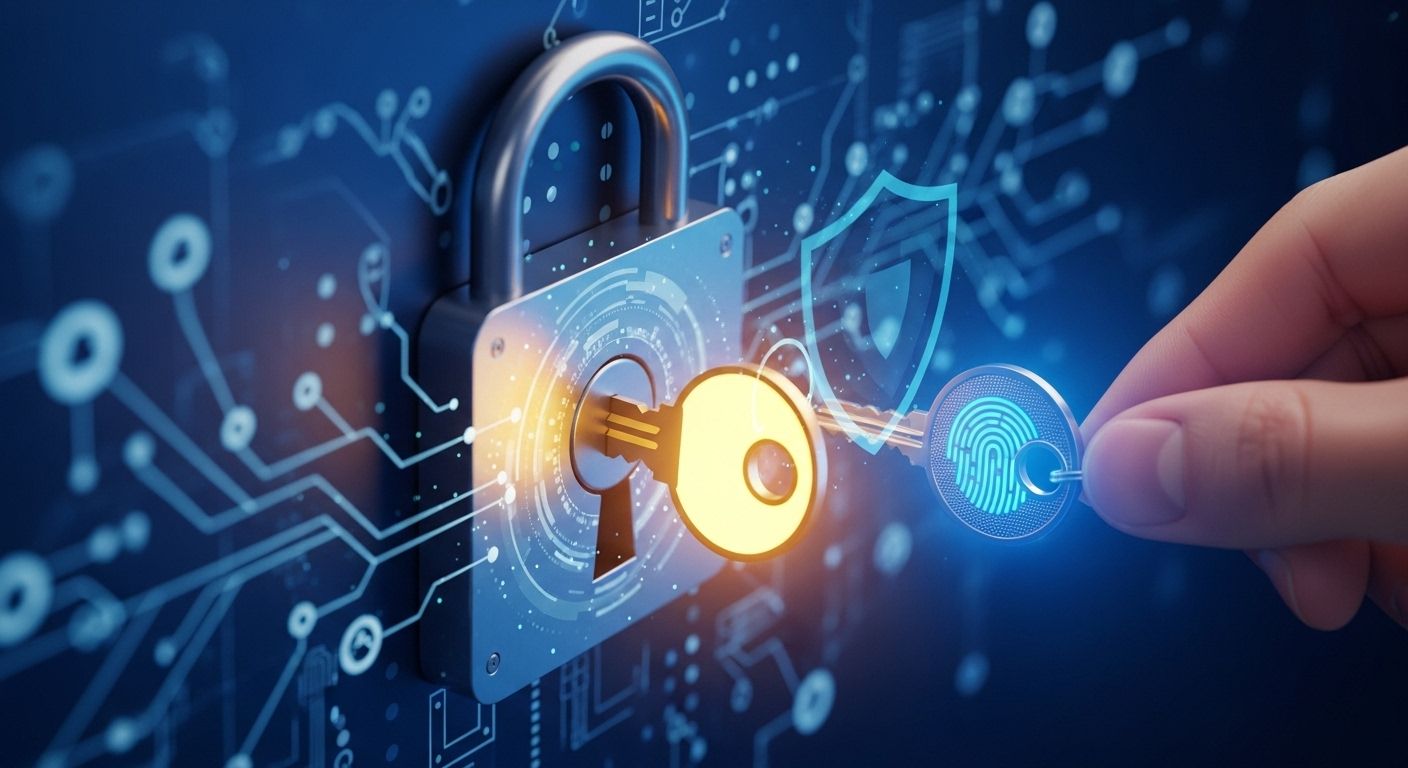
| Factor Type | Security Level | Convenience | Vulnerabilities |
|---|---|---|---|
| SMS/Text Message | Good (Basic) | High | SIM swapping, network interception. |
| Authenticator App | Better (Strong) | Medium | Requires smartphone, potential for device theft. |
| Physical Key | Best (Elite) | Low to Medium | Requires physical device, potential for loss. |
- #### Securing Your Most Critical Accounts First
The task of securing every single online account can feel daunting. That’s why a prioritized approach is key. As mentioned, your primary email account is the “master key” to your digital kingdom. If an attacker gains control of it, they can initiate password resets for nearly every other service you use. Locking this down with a strong 2FA method like an authenticator app or a physical key should be your immediate first step.
Next, secure any accounts that hold financial information. This includes your online banking portal, investment accounts, and payment services like PayPal or Venmo. After that, move on to your password manager, which contains the credentials for all your other accounts. Finally, enable 2FA on your main social media profiles and cloud storage services, which often contain personal information that could be used for identity theft or extortion. By tackling these high-value targets first, you significantly reduce your overall risk profile with minimal effort.
Overcoming Common Misconceptions and Hurdles
One of the biggest hurdles to widespread 2FA adoption is the perception that it is inconvenient. Users may feel that the extra step of pulling out their phone to enter a code is a hassle. While it does add a few seconds to the login process, this minor inconvenience is an incredibly small price to pay for the monumental increase in security. It's helpful to reframe the thought process: that brief extra step is actively blocking countless potential attacks on your account every day. Furthermore, many services allow you to "trust" a device, so you only need to perform the 2FA check when logging in from a new computer or browser.
Another common misconception is the "I'm not important enough to be hacked" fallacy. Many people believe that because they aren't a celebrity or a CEO, no one would bother targeting them. This fundamentally misunderstands the nature of modern cybercrime. The vast majority of attacks are automated and indiscriminate. Hackers use bots to scan the internet for vulnerable accounts, and your data—whether it's personal photos, contacts, or access to a social media account with a few hundred followers—has value on the dark web. Everyone is a target.
Finally, a legitimate concern is what happens if you lose your second factor. What if your phone, with your authenticator app, is lost, stolen, or broken? This is precisely why it is absolutely critical to save your backup codes when you first set up 2FA. These codes are your emergency key. You should print them out or write them down and store them in a secure physical location, such as a safe or a locked drawer, separate from your primary devices. Some services also offer alternative recovery methods, like linking a secondary phone number or email, but backup codes remain the most reliable fallback.
- #### Is Two-Factor Authentication Completely Foolproof?
It is important to have a realistic understanding of 2FA’s capabilities. While it offers a massive security enhancement, no security measure is 100% foolproof. Highly sophisticated and targeted attacks can, in rare cases, circumvent 2FA. For instance, an extremely advanced real-time phishing attack could theoretically trick a user into providing their password and then immediately relay a request for their 2FA code, which the user then enters into the fake site. An attack on SMS-based 2FA, know as SIM-swapping, is also a known threat vector.
However, it's crucial to put this in perspective. These types of attacks are complex, difficult to execute, and are typically reserved for high-value targets like executives or political figures. For the overwhelming majority of users, 2FA will block the common, automated, and opportunistic attacks that make up over 99% of threats. The question isn't whether 2FA is perfect, but whether it makes you an exponentially harder target. The answer is a resounding yes. Using 2FA is like putting a high-security deadbolt on your door; while a determined master locksmith might still get in, it will deter every opportunistic thief.
- #### The Business Case for Mandatory 2FA
For any organization, the argument for implementing mandatory 2FA is overwhelming. A single compromised employee credential can be the initial entry point for a devastating ransomware attack or a massive data breach. The costs of such an incident—including remediation, regulatory fines, legal fees, and reputational damage—can be astronomical and even existential for small businesses.
Mandating 2FA across the organization is a powerful, proactive cybersecurity control. It dramatically reduces the attack surface and safeguards critical business assets, from intellectual property to customer databases. Furthermore, it is increasingly becoming a requirement for regulatory compliance and for obtaining favorable terms on cybersecurity insurance policies. Investing in the deployment and training for 2FA is not just an IT expense; it's a strategic investment in business continuity, risk management, and building a culture of security.
***
Frequently Asked Questions (FAQ)
Q: What is the difference between 2FA and MFA?
A: 2FA (Two-Factor Authentication) is a specific type of MFA (Multi-Factor Authentication). 2FA always involves exactly two authentication factors (e.g., a password + a phone code). MFA is a broader term that can include two or more factors (e.g., a password + a fingerprint scan + a physical key). In common usage, the terms are often used interchangeably, but 2FA is the most common implementation you'll encounter.
Q: Is SMS 2FA still safe to use?
A: Using SMS for 2FA is significantly better than using no 2FA at all. However, it is considered the least secure method because it's vulnerable to attacks like SIM swapping. If you have the option, it is highly recommended to use an authenticator app or a physical security key instead, as they provide superior protection.
Q: What should I do if I lose my phone with my authenticator app?
A: This is why saving your backup codes is critical. When you first enable 2FA, most services provide you with a list of 8-10 single-use codes. Use one of these backup codes to log in to your account. Once you are in, you should immediately disable 2FA and then re-enable it on your new device to generate a new set of codes and a new link to your authenticator app.
Q: Which accounts should I prioritize for enabling 2FA?
A: Start with your most critical accounts. The priority order should be: 1) Your primary email account, 2) Your password manager, 3) Banking and financial accounts, 4) Cloud storage services, and 5) Major social media accounts.
Q: Can I use one authenticator app for all my different accounts?
A: Yes, absolutely. A single authenticator app like Google Authenticator, Microsoft Authenticator, or Authy can manage the 2FA codes for dozens of different services, from Google and Facebook to your banking app and gaming accounts. All your codes will be conveniently located in one application.
***
Conclusion
In the modern digital landscape, the password alone is a relic of a simpler time, no longer capable of securing our valuable online presence. The importance of two-factor authentication cannot be overstated; it is the single most powerful, accessible, and effective measure any individual or organization can take to defend against the vast majority of cyberattacks. It transforms your accounts from being protected by a single, often weak, point of failure into a fortified digital safe.
While it may introduce a minor extra step, the immense security it provides is an invaluable trade-off. From defending against phishing and password reuse to securing your most sensitive financial and personal data, 2FA is the essential upgrade your digital life needs. The tools are free, the setup is simple, and the protection is profound. Don't wait for a security breach to teach you the lesson; take a few minutes today to enable two-factor authentication on your critical accounts and reclaim control of your digital security.
***
Summary
This article explores the critical importance of two-factor authentication (2FA) as an essential security measure in today's digital world. It explains that 2FA enhances security by requiring a second verification factor—such as a code from an authenticator app or a physical key—in addition to a password, effectively blocking over 99.9% of automated cyberattacks. The article details how 2FA works, compares the security levels of different methods like SMS, authenticator apps, and physical keys, and provides a practical guide for implementation, emphasizing the need to prioritize critical accounts like email and banking. By addressing common misconceptions and highlighting its role in mitigating risks from weak passwords and phishing, the piece concludes that 2FA is a necessary, accessible, and powerful tool for both individuals and businesses to protect their most valuable digital assets.

